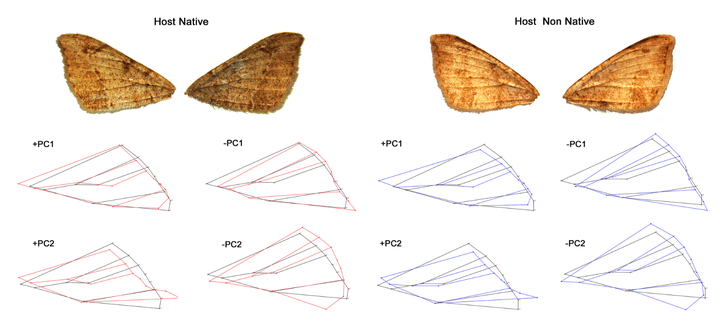Left–right asymmetry and morphological consequences of a host shift in the oligophagous Neotropical moth *Macaria mirthae* (Lepidoptera Geometridae)
Abstract
Phytophagous insects are excellent model organisms to study the genetic and ecological components of adaptation and morphological divergence, because their host plants are one of the main environmental factors influencing their early life stages. Although many lepidopterans are highly specialized in their host use, shifts to exotic plants have been reported for some species. Macaria mirthae is a native moth from Northern Chile that feeds preferentially on the Fabacea species Acacia macracantha, however due to habitat loss a host shift has recently been observed to the introduced fabacean Leucaena leucocephala. We studied the impact that different host plants have on the developmental instability levels in the moth’s wing morphology evaluating both fluctuating asymmetry (FA) and directional asymmetry (DA). FA measures the small random deviations existing between the left and right sides of bilaterally symmetrical traits and it widely used as a biomonitor of environmental quality. DA refers to the tendency for a trait to be consistently developed in a different manner on the right and left sides of the body. It has been recently shown that subtle DA patterns seem to be a ubiquitous phenomenon among bilaterian animals. Our results confirmed the presence of FA in M. mirthae forewings by applying geometric morphometric techniques. Furthermore, it was found that the individuals feeding on the endemic tree (A. macracantha) showed marked DA levels, while the specimens inhabiting the exotic plant (L. leucocephala) did not. The absence of DA in the individuals occupying the exotic plant is striking, because it has been established that this asymmetry pattern is widespread among insect wings. This phenomenon could be related to the influence of L. leucocephala on normal wing development. Despite the reduced quality of L. leucocephala as host plant, its wider presence in the Azapa valley (Chile) could explain the host shift made by M. mirthae.
